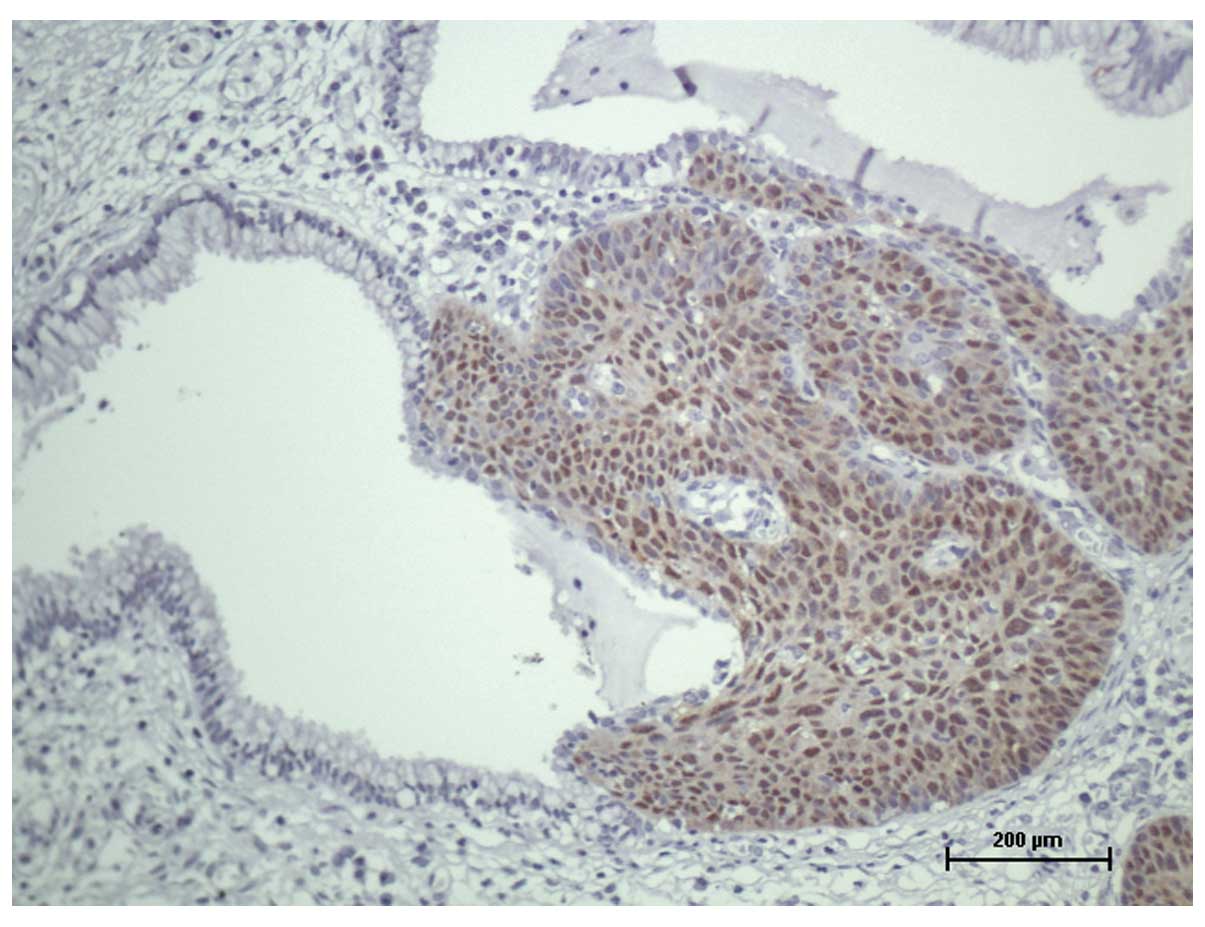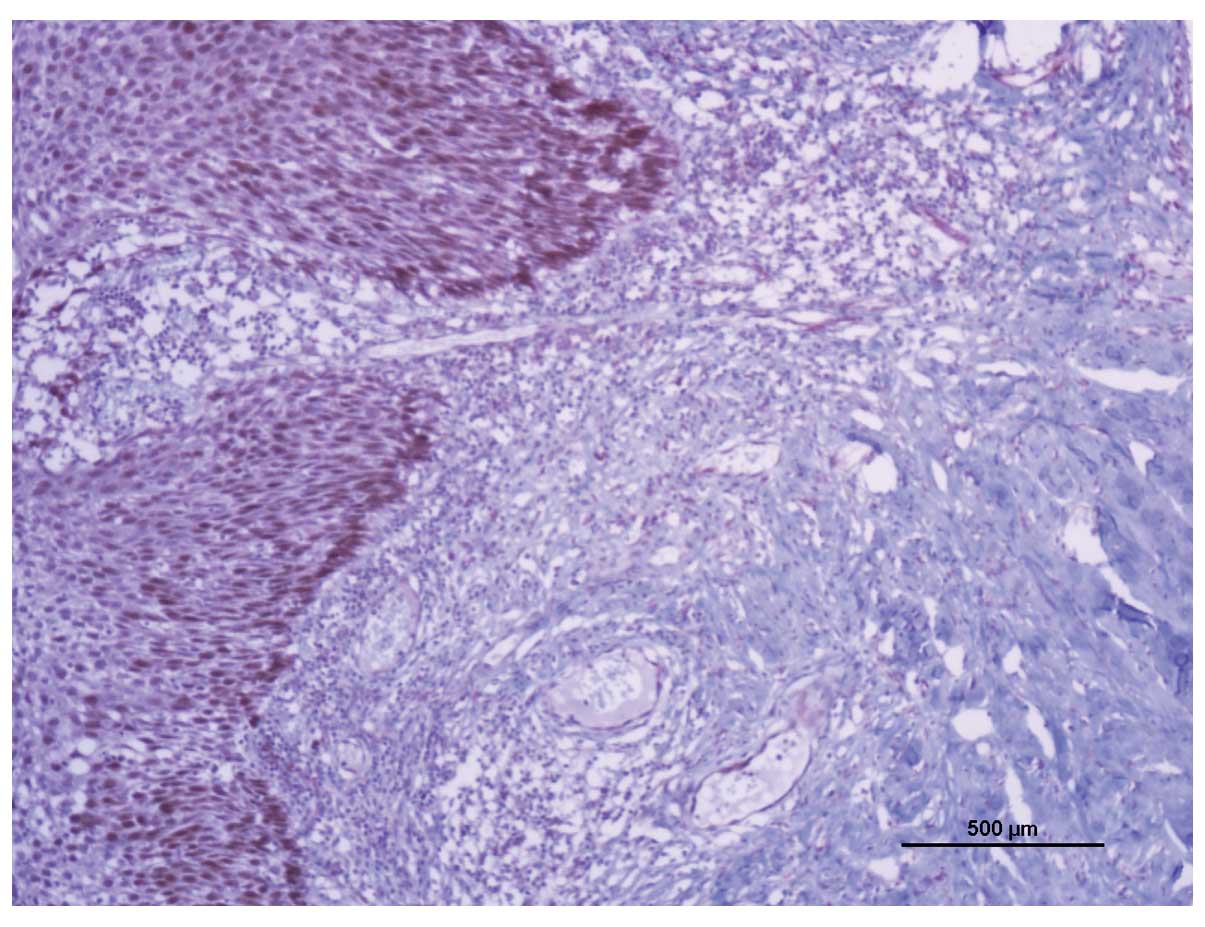|
1.
|
zur Hausen H: Papillomaviruses causing
cancer: evasion from host-cell control in early events in
carcinogenesis. J Natl Cancer Inst. 92:690–698. 2000.PubMed/NCBI
|
|
2.
|
zur Hausen H: Papillomaviruses and cancer:
from basic studies to clinical application. Nat Rev Cancer.
2:342–350. 2002.PubMed/NCBI
|
|
3.
|
Schiffman M, Castle PE, Jeronimo J,
Rodriguez AC and Wacholder S: Human papillomavirus and cervical
cancer. Lancet. 70:890–907. 2007. View Article : Google Scholar
|
|
4.
|
Tungteakkhun SS and Duerksen-Hughes PJ:
Cellular binding partners of the human papillomavirus E6 protein.
Arch Virol. 153:397–408. 2008. View Article : Google Scholar : PubMed/NCBI
|
|
5.
|
Doorbar J: The papillomavirus life cycle.
J Clin Virol. 32(Suppl 1): S7–S15. 2005. View Article : Google Scholar
|
|
6.
|
Cuschieri K and Wentzensen N: Human
papillomavirus mRNA and p16 detection as biomarkers for the
improved diagnosis of cervical neoplasia. Cancer Epidemiol
Biomarkers Prev. 17:2536–2545. 2008. View Article : Google Scholar : PubMed/NCBI
|
|
7.
|
Carozzi F, Confortini M, Dalla Palma P,
Del Mistro A, Gillio-Tos A, De Marco L, et al: Use of p16-INK4A
overexpression to increase the specificity of human papillomavirus
testing: a nested substudy of the NTCC randomised controlled trial.
Lancet Oncol. 9:937–945. 2008. View Article : Google Scholar : PubMed/NCBI
|
|
8.
|
Lin HP, Wang YP and Chiang CP: Expression
of p53, MDM2, p21, heat shock protein 70, and HPV 16/18 E6 proteins
in oral verrucous carcinoma and oral verrucous hyperplasia. Head
Neck. 33:334–340. 2011.PubMed/NCBI
|
|
9.
|
Schiffman M, Wentzensen N, Wacholder S,
Kinney W, Gage JC and Castle PE: Human papillomavirus testing in
the prevention of cervical cancer. J Natl Cancer Inst. 103:368–383.
2011. View Article : Google Scholar : PubMed/NCBI
|
|
10.
|
Longatto-Filho A, Etlinger D, Pereira SM,
Kanamura CT, di Loreto C, Santos Gda C, et al: The association of
p16(INK4A) and fragile histidine triad gene expression and cervical
lesions. J Low Genit Tract Dis. 11:151–157. 2007. View Article : Google Scholar : PubMed/NCBI
|
|
11.
|
Roncaglia MT, Tacla M, Vieira da Motta E,
Caiaffa H, Ab’Saber A, Alves VA, Longatto Filho A and Baracat EC:
Evaluation of the combination of cytology and hybrid capture to
safely predict the high-grade lesion status of patients treated
with conization with large loop excision of the transformation
zone. Acta Cytol. 55:421–425. 2011. View Article : Google Scholar : PubMed/NCBI
|
|
12.
|
Reuschenbach M, Clad A, von Knebel
Doeberitz C, Wentzensen N, Rahmsdorf J, Schaffrath F, Griesser H,
Freudenberg N and von Knebel Doeberitz M: Performance of
p16INK4a-cytology, HPV mRNA, and HPV DNA testing to identify high
grade cervical dysplasia in women with abnormal screening results.
Gynecol Oncol. 119:98–105. 2010. View Article : Google Scholar : PubMed/NCBI
|
|
13.
|
Vinokurova S and von Knebel Doeberitz M:
Differential methylation of the HPV 16 upstream regulatory region
during epithelial differentiation and neoplastic transformation.
PLoS One. 6:e244512011. View Article : Google Scholar
|
|
14.
|
Wu QJ, Guo M, Lu ZM, Li T, Qiao HZ and Ke
Y: Detection of human papillomavirus-16 in ovarian malignancy. Br J
Cancer. 89:672–675. 2003. View Article : Google Scholar : PubMed/NCBI
|
|
15.
|
Qi ZL, Huo X, Xu XJ, Zhang B, Du MG, Yang
HW, Zheng LK, Li J and Shen ZY: Relationship between HPV16/18 E6
and 53, 21WAF1, MDM2, Ki67 and cyclin D1 expression in esophageal
squamous cell carcinoma: comparative study by using tissue
microarray technology. Exp Oncol. 28:235–240. 2006.PubMed/NCBI
|
|
16.
|
Lawson JS, Glenn WK, Heng B, Ye Y, Tran B,
Lutze-Mann L and Whitaker NJ: Koilocytes indicate a role for human
papilloma virus in breast cancer. Br J Cancer. 101:1351–1356. 2009.
View Article : Google Scholar : PubMed/NCBI
|
|
17.
|
Akil N, Yasmeen A, Kassab A, Ghabreau L,
Darnel AD and Al Moustafa AE: High-risk human papillomavirus
infections in breast cancer in Syrian women and their association
with Id-1 expression: a tissue microarray study. Br J Cancer.
99:404–407. 2008. View Article : Google Scholar : PubMed/NCBI
|
|
18.
|
Zehbe I, Lichtig H, Westerback A, Lambert
PF, Tommasino M and Sherman L: Rare human papillomavirus 16 E6
variants reveal significant oncogenic potential. Mol Cancer.
10:772011. View Article : Google Scholar : PubMed/NCBI
|
|
19.
|
Marks M, Castle PE, Schiffman M and
Gravitt PE: Evaluation of any or type-specific persistence of
high-risk human papillomavirus for detecting cervical precancer. J
Clin Microbiol. 50:300–306. 2012. View Article : Google Scholar : PubMed/NCBI
|
|
20.
|
Branca M, Ciotti M, Santini D, Di Bonito
L, Giorgi C, Benedetto A, Paba P, Favalli C, Costa S, Agarossi A,
Alderisio M and Syrjänen K: p16(INK4A) expression is related to
grade of cin and high-risk human papillomavirus but does not
predict virus clearance after conization or disease outcome. Int J
Gynecol Pathol. 23:354–365. 2004. View Article : Google Scholar : PubMed/NCBI
|
|
21.
|
Romagosa C, Simonetti S, López-Vicente L,
Mazo A, Lleonart ME, Castellvi J and Ramon y Cajal S: p16(Ink4a)
overexpression in cancer: a tumor suppressor gene associated with
senescence and high-grade tumors. Oncogene. 30:2087–2097. 2011.
View Article : Google Scholar : PubMed/NCBI
|
















